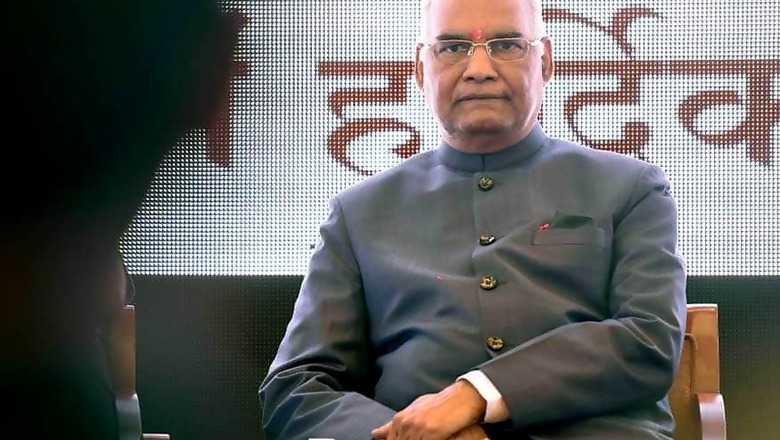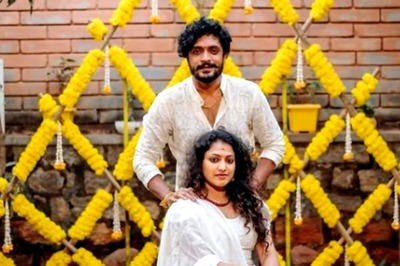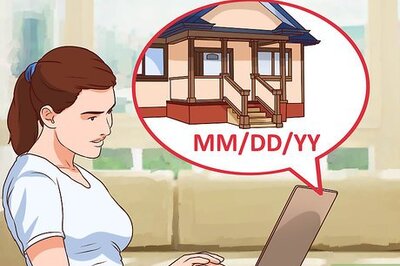
views
An element of caste-based bias is evident behind the objectionable behaviour shown towards President Ram Nath Kovind and his wife by the servitors of Jagannath temple.
A prominent journalist of Odisha said that Kovind’s predecessor Pranab Mukherjee had also visited the temple but he didn’t face any trouble, possibly because his social background suits the servitors at the temple.
With the Rashtrapati Bhavan raising strong objections to the indecent behaviour, it’s not illogical to think that President Kovind’s social background as a Dalit could be the possible reason of this nasty incident.
In pre–Independence era, there had been numerous movements seeking temple entry for Dalits and the history is full of stories of brutal attacks on the proponents of those movements. The temple entry movement of the 1920s and 30s in Kerala became a landmark in the history of social reforms for its uniqueness and sweeping success.
In Odisha, entry into temples was prohibited not only for untouchables, but for other lower castes as well. A K Biswas has written about two events in Rabindranath Tagore’s life published in weekly Mainstream in 2010. The entry of the Tagores in the sacred shrine was officially banned. A law in this behalf was enacted by the British government in 1809. The last British Viceroy Lord Mountbatten had accompanied Dr BR Ambedkar and visited Puri. While the British Paramount received red carpet reception the priests denied Dr Ambedkar entry into the Jagannath temple.
The fundamental difference between the British rule and Independent India regarding temple entry for Dalits is that all laws enacted by the Britishers denying entry into the temples lapsed once the Indian Constitution was adopted with great vigor and fervor. But the rules of socially powerful class are still intact.
Annoyed with the denial of entry into the Jagannath temple to his family, Jagjivan Ram had once wrote: “Shankaracharya can write an article saying that according to the Vedas, the Vedic temples get polluted if low castes enter therein.” In this way, he noted, “the evil spirits get into the idols of the temples, and when these idols are worshipped these evil forces become mighty. In turn, the evil feelings like strife anger and hate increase and causes diseases, disaster, disorder, great floods, droughts, famines and earthquakes. Thus the people face destruction.”
Jagjivan Ram held several top constitutional posts, but at social level he was always treated as an inferior notwithstanding his political heavyweight status. As the Defence Minister, he unveiled the statue of Sampoornanad in Varanasi, present constituency of Prime Minister Narendra Modi, in January 1978. But after his departure, the same statue got “purified” by some Brahmins who poured Ganga jal on it claiming ‘unsolicited’ touching by a Dalit.
Prior to President Kovind’s visit to the Jagannath temple, on June 25, 2011, a Hindu temple at village Ranapada in Puri refused entry to PL Punia, the then chairman of the National Commission for Scheduled Castes.
Not only this, according a report published in a newspaper on June 16 this year, about a thousand strong mob attacked Bodasa village in Odisha’s Nayagarh district because Parei Nayak, 25 year-old member from Pano community, a Scheduled Caste group, said that he would “directly” offer prayers at the local Shiva temple.
After Parei was beaten up, his father registered an FIR against the culprits. The upper caste men then attacked houses in the Dalit quarter, adjacent to the temple. The houses were left completely destroyed. Commenting on the incident, Patia Bhola, a local contractor, said, “When we don’t touch the Gods directly, and offer prayers through the priest, how can he (Parei) do that?”
The constitution only approves the idea of a citizen and whenever a citizen tries to take refuge under the principle of equality envisaged in the constitution, the system of temples gets offended as the principle of equality is not applicable there. The structure of social power still comes between the citizen and the idol in the temples. This very structure of social power neither bothers about any modern power structure nor treats them as equals.
The brokers of Jagannath temple, whose behaviour compelled the Rashtrapati Bhavan to raise strong objections, are the integral part of the rituals of the temple system. This power has been bestowed upon them hereditarily. Interestingly, records of 13th century A.D. and of the British period suggest that there were 36 categories of servitors. Within the last two centuries the number of categories has been increased from 36 to 250.
After 70 years since adoption of the Indian Constitution, those who control religious power structure of this country have displayed dozens of incidents of indecent behaviour with ministers, judges and other constitutional post holders belonging to Dalit community.
The President is the supreme commander of all the three armed forces of this country. But if he is a Dalit, he is always considered as an inferior in the social hierarchy notwithstanding being the first citizen of this country. In fact, every political party, irrespective of their ideology and principles, is bugged by this social hierarchy or social order and reels under its pressure. They don’t even dare to challenge it and are unanimous in continuing them as ever. And this is akin to their approach towards khap panchayats.
(The author is a senior journalist. Views expressed are personal.)

















Comments
0 comment